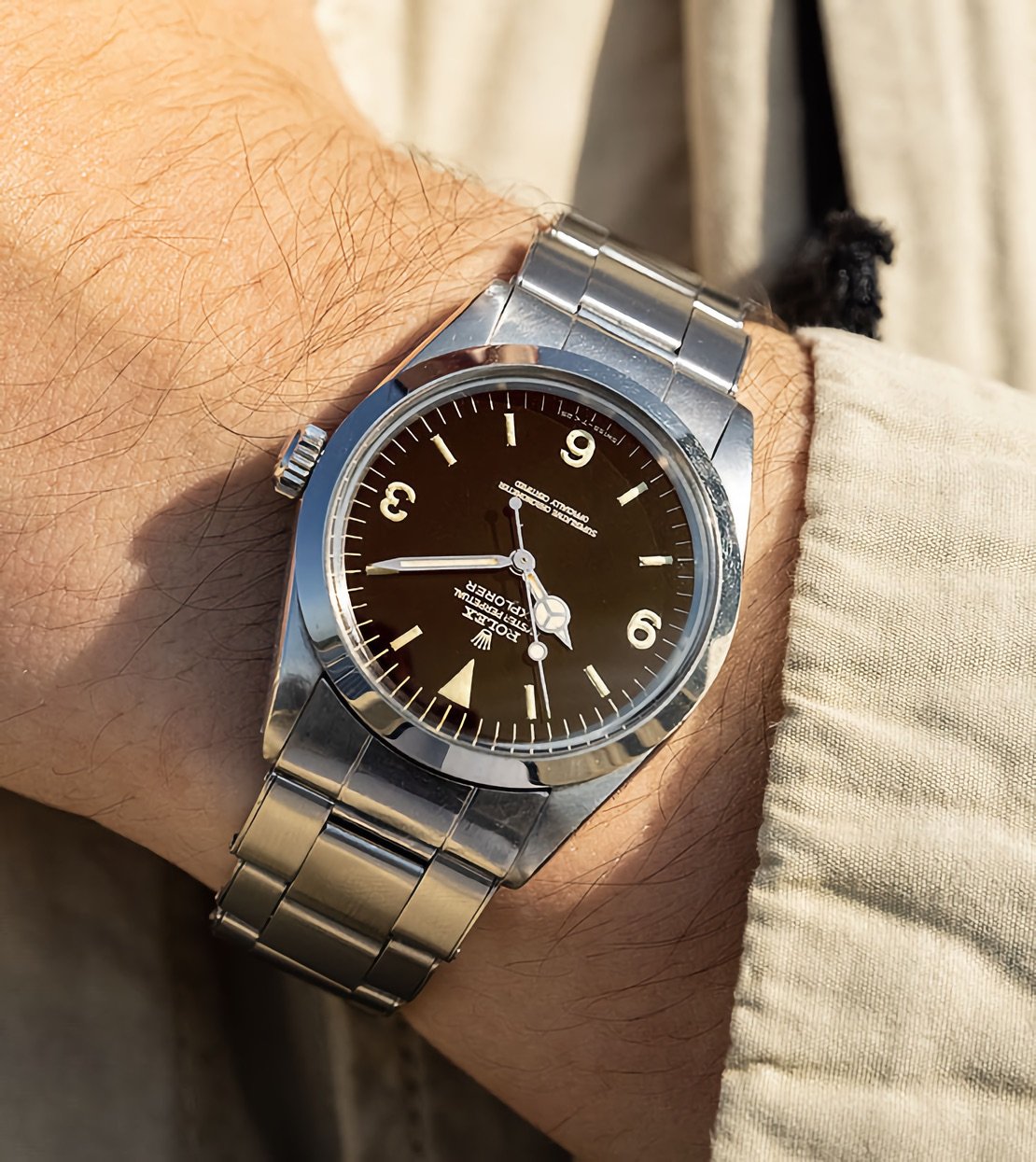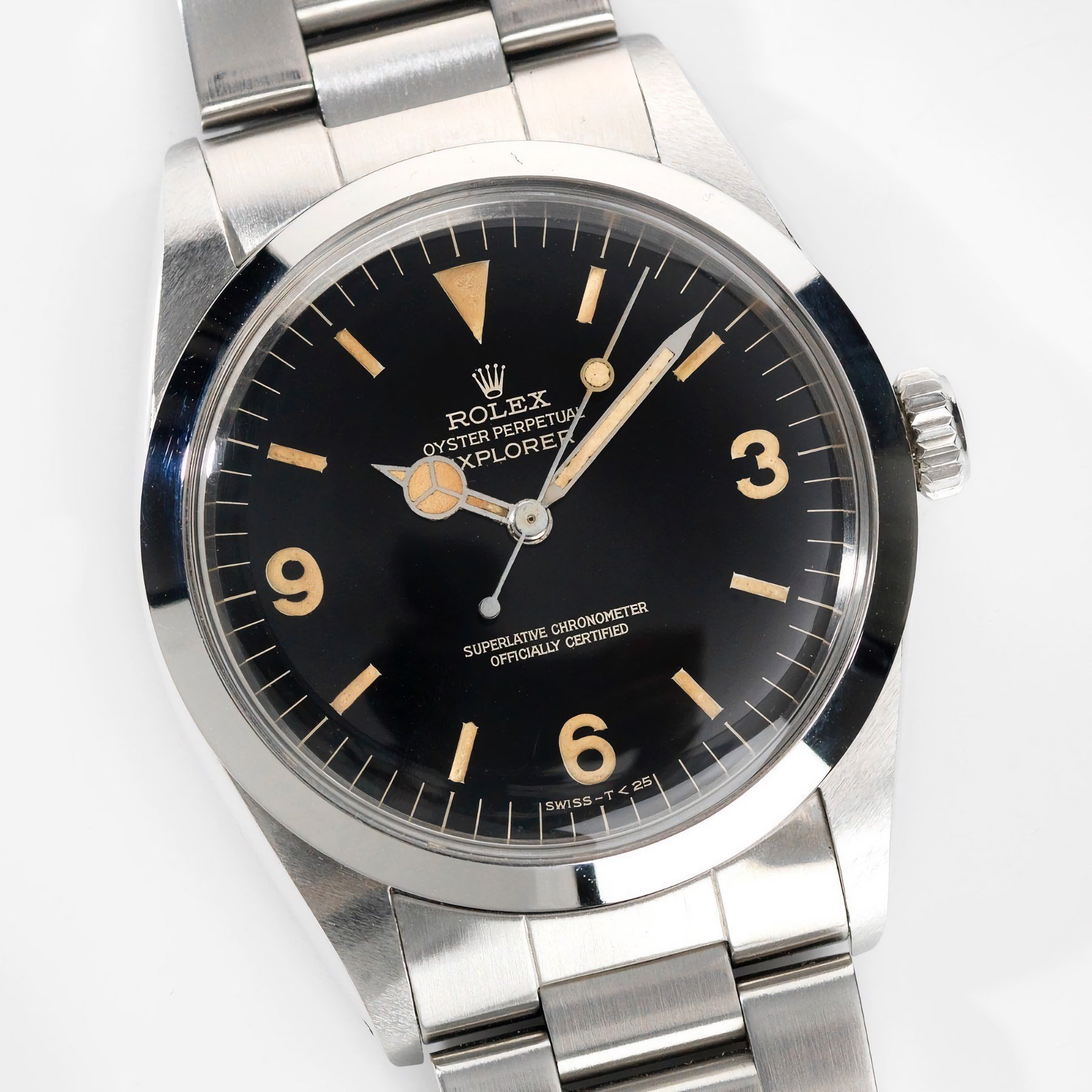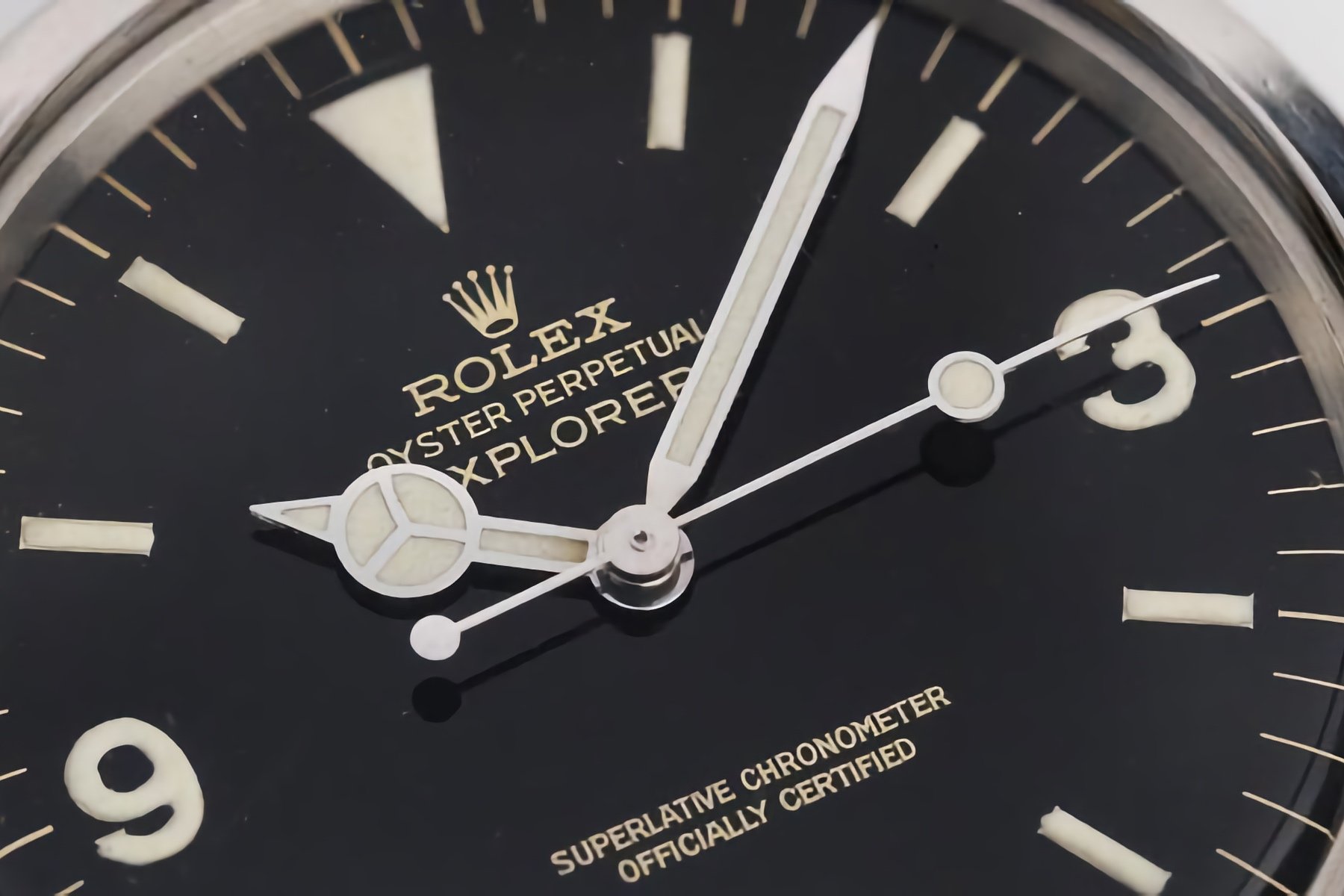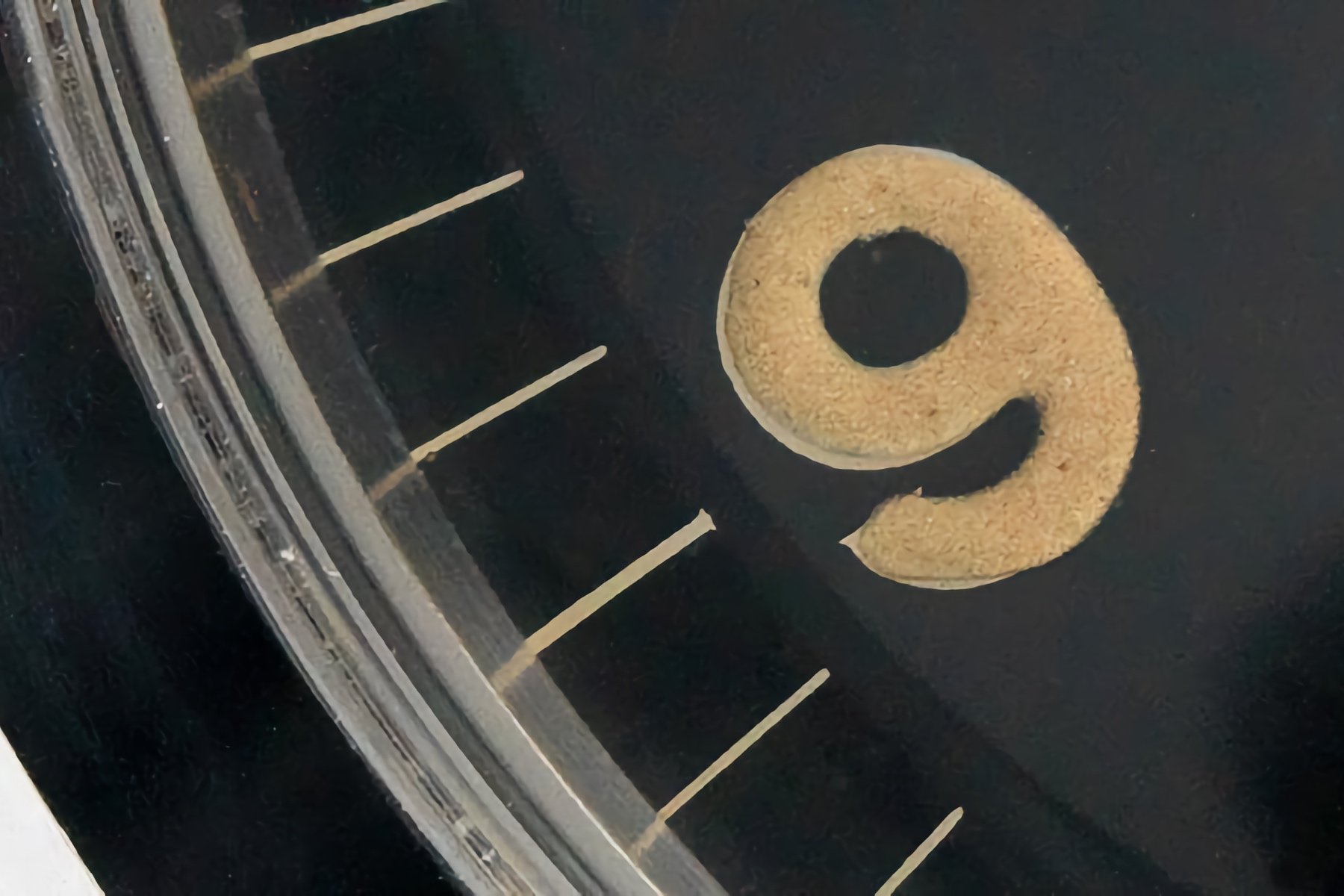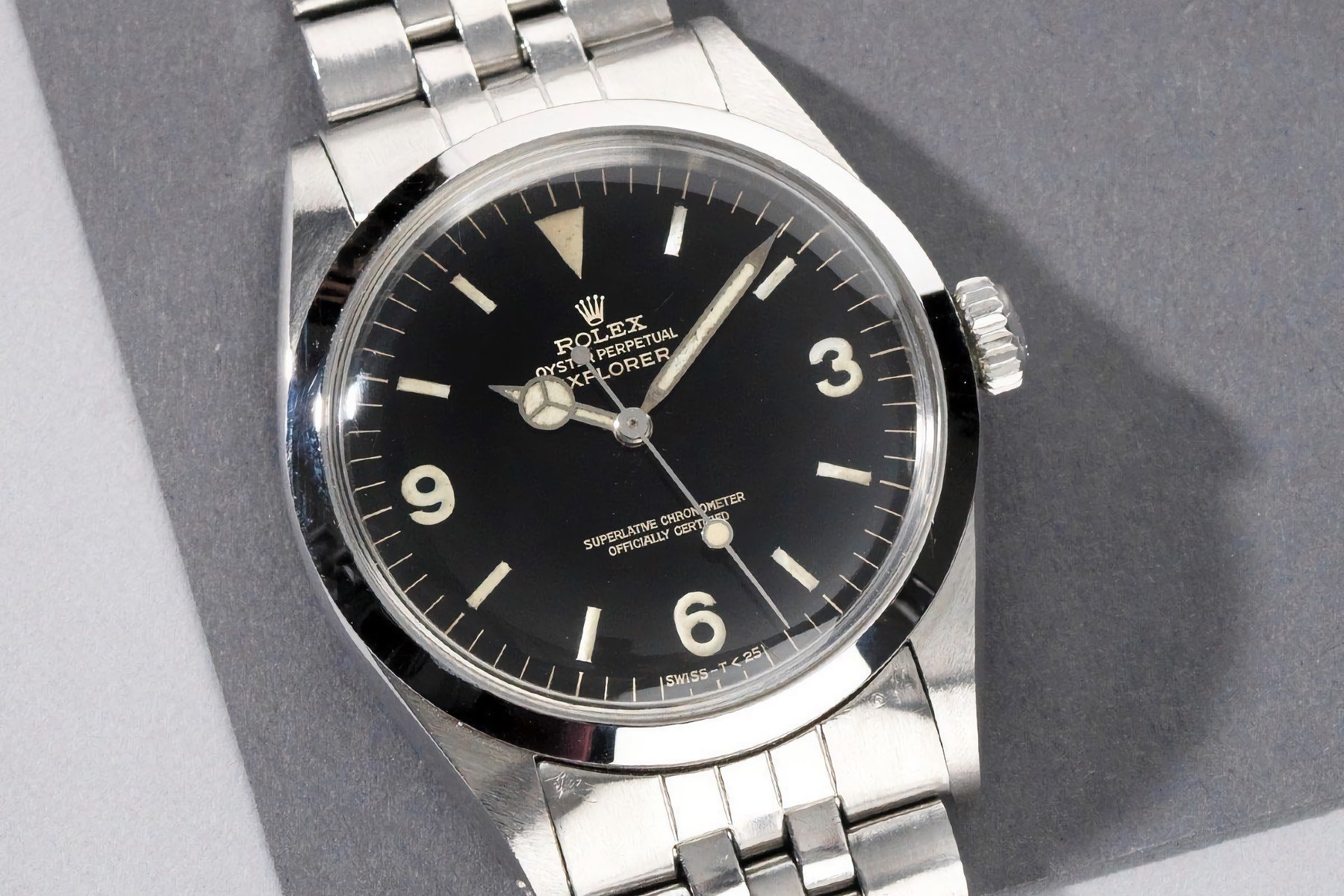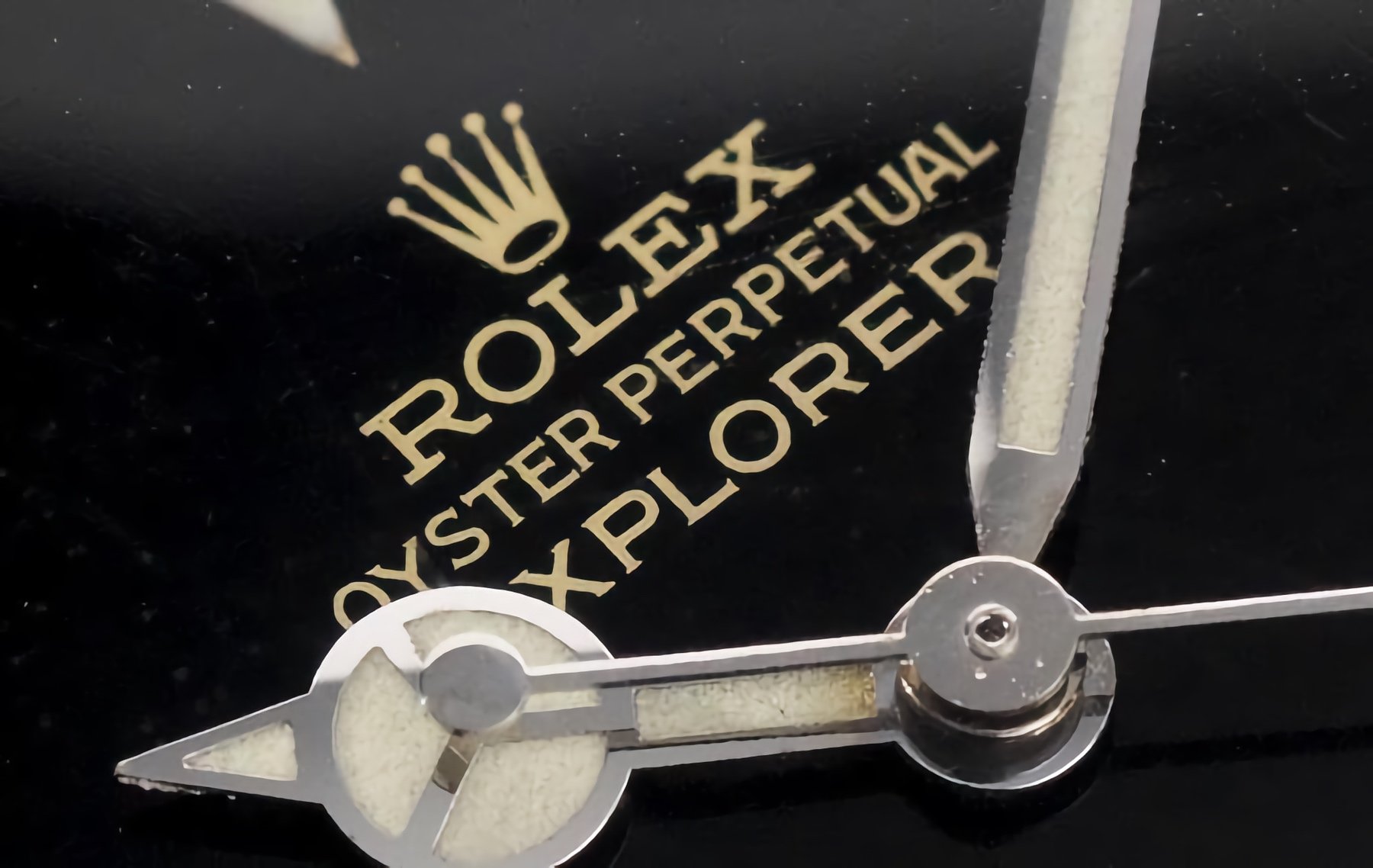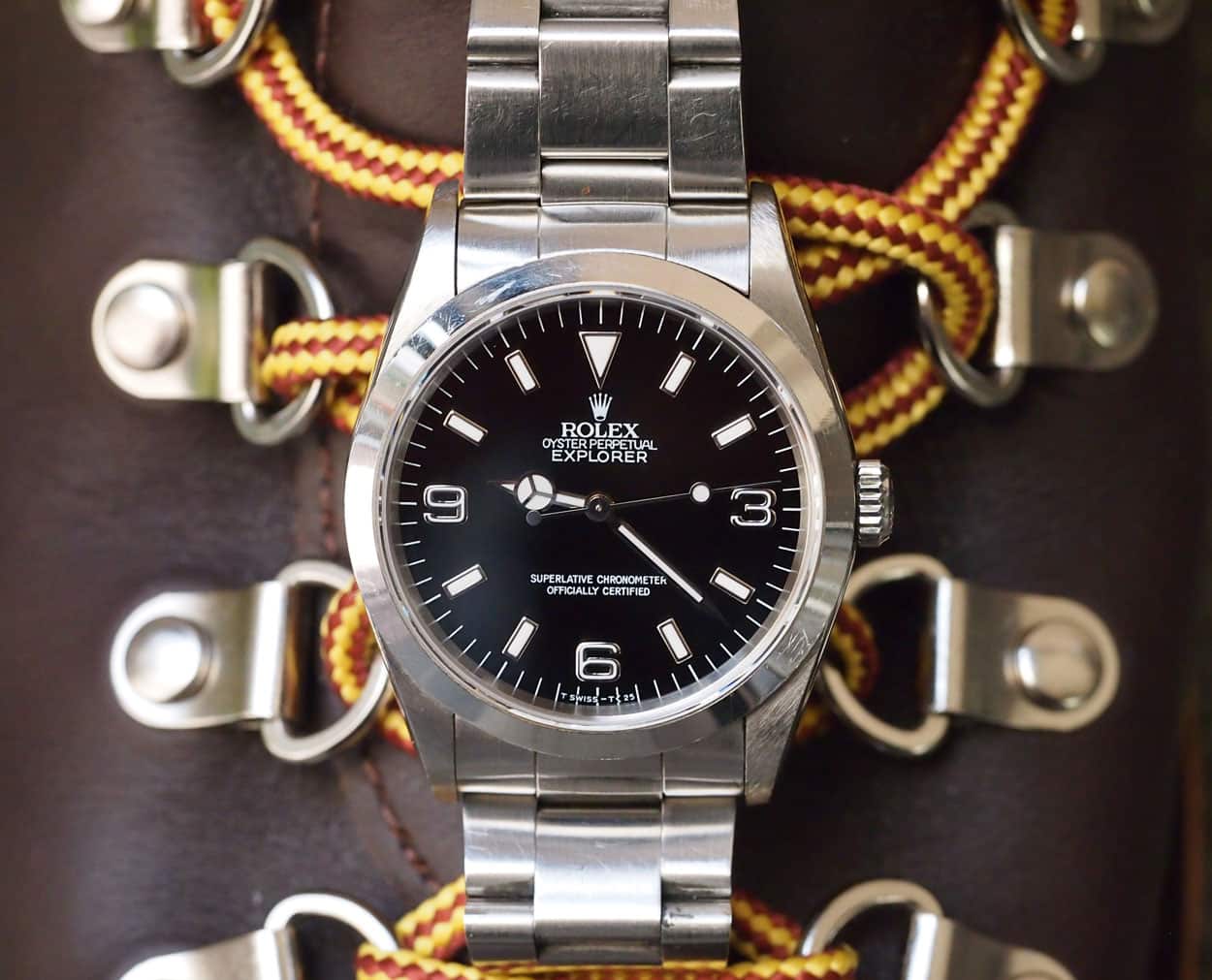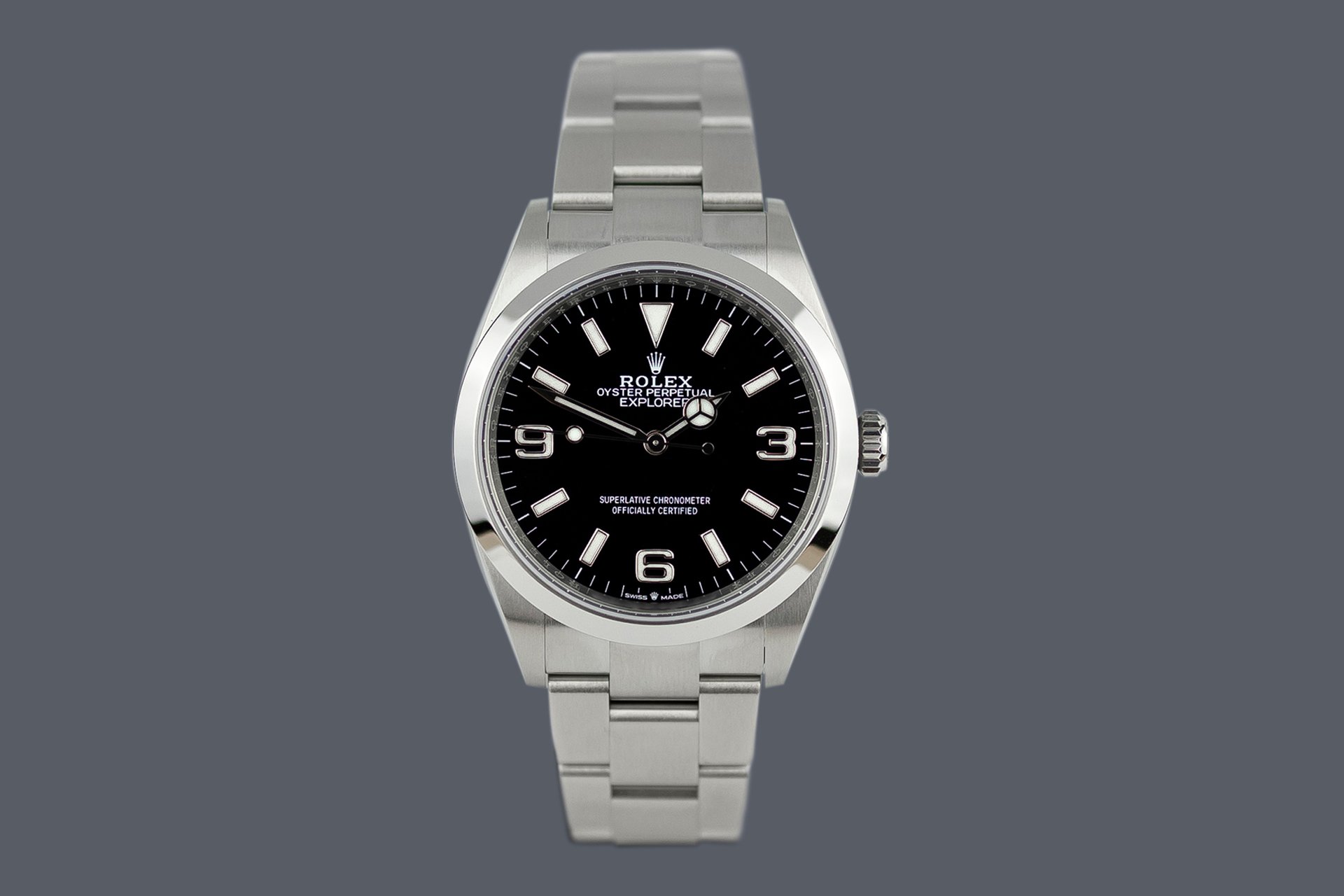My Grail Watch: Thomas Shares Why The Rolex Explorer 1016 Haunts His Dreams
Lex recently unpacked the concept of the grail watch and came to the conclusion that it is better if it remains a dream. I guess I agree since I will not be chasing mine, as much as I love it. My grail watch is the Rolex Explorer 1016. More specifically, one from the early ’60s with a gilt dial. It is my favorite watch by some margin. I would not change a single thing about it. But, most likely, it will never be mine.
My grail watch is not exciting. It is not impressive like Lex’s grail Patek 5270P. My grail is the most modest and unassuming sports watch in Rolex’s (back) catalog. And, in my humble opinion, it is also the best watch ever designed.
My love affair with the Rolex Explorer
I am not into the Rolex Explorer for its half-fabricated story about summiting Mount Everest. As much as I love watch a good story, this is really not one of them in my eyes. My love affair with the Rolex Explorer is purely based on the physical product, perhaps augmented by what it represents. Let me elaborate.
For starters, the 36mm Oyster case and Oyster bracelet are the best case and bracelet designs ever drawn. Please do not feel offended if you disagree; this is a completely private opinion. In my eyes, almost everything else looks like an effort to not look like the Oyster case and bracelet. I have not seen a more simplistically functional and beautiful case and bracelet design since. And goodness gracious, there have been quite a few!
Conceptually, I love that the Explorer is free of the stigma that some other Rolex watches carry. When you spot a Rolex, it is either on the wrist of a watch aficionado or a showboat. Not the Explorer. Its owner is either an aficionado or an adventurer. You do not wear an Explorer to flaunt it. And that, I think, only serves to make it cooler. It is anti-bling.
The Rolex Explorer 1016
I love almost all Rolex Explorers, but my grail watch is the Explorer 1016. It is the archetypal vintage Explorer reference. It was in production for a whopping 29 years, starting in 1960. If you are only familiar with modern Rolex, you will still have no trouble identifying this as an Explorer. Like almost all of the brand’s models, the design has undergone slow evolution rather than radical change. I believe this is part of Rolex’s long-term success and why many of the brand’s watches became iconic. Slow and steady is the way to go.
The dial is what differentiates the Explorer from similar Rolex Oyster Perpetuals. The signature 3-6-9 dial is adorned with slender, simple Arabic numerals. A minute track, stick markers, and a triangle at 12 o’clock complete the basic layout. Around the center of the dial, we find the brand logo, model designation, and chronometer spec. The hands are the typical “Mercedes” style. The lume is radium for the first three years and tritium from 1963 onwards.
The 1016 is powered by caliber 1560, and later 1570 with an upped beat rate. These calibers remain quite easy to service and source parts for today if you have a proper Rolex-specialized watchmaker. Technically, you can wear an Explorer 1016 on a daily basis, free of worry.
Gilt dial 101
The Explorer 1016 was produced with a host of dial variations. They can be roughly divided into two main categories — gilt dials (up until ca. 1967) and matte dials (1967–1989). My personal favorite by far is the gilt-dial variant. Just in case, here is an ultra-short refresher course on gilt dials.
Today, dials are often referred to as “gilt” if they feature any sort of gold-tone printing. True gilt dials, however, are made through a unique (and costly) process. First, the dial printing is applied to an (often) brass blank dial in clear lacquer. Next, the dial is galvanized with a black paint. Since the paint is applied through an electrical current, it sticks only to the conductive exposed metal, not the clear-lacquered dial features.
The result is a black dial with shimmering gold-tone (or, more accurately, brass) features that lay ever-so-slightly deeper than the black surrounds. Paired with aged radium or tritium, you get a warmth that is simply stunning. Well-aged gilt dials are truly some of the prettiest dials ever made if you ask me. The metal blank can be made of other materials than brass, sometimes resulting in silver-colored dial features.
Why I love the gilt Rolex Explorer 1016
The characteristics I love most in watches come together in the gilt Explorer 1016. You may be growing tired of my never-ending proclamation of love for small do-it-all watches, but this is perhaps the daddy of them all. A good vintage Explorer 1016 is even more stylistically versatile than a modern 36mm Explorer, I think. The pure sportiness is somewhat attenuated by the vintage vibe.
As much as I love the daily practicality of a sapphire crystal, aesthetically, I prefer the old domed acrylic. The same goes for the riveted Oyster bracelet. It is technically inferior to any modern bracelet, but I prefer the looks. And no, a faux-riveted modern bracelet is not the same.
The 1016’s dial layout is even more subdued and more function-first than later Explorer dials. I still love the dials found on the 14270 and later models, but the 1016 has an old-world charm to it. It is a look that is not of the modern age, and I am totally in love with it. The gilt versions, even more so. The metallic sheen of the dial features is just so beautiful. You simply do not get that effect from gold-colored paint.
Why I will most likely never own an Explorer 1016
A good example of a gilt Explorer 1016 will — at the time of writing — set you back between 20,000 and 30,000 euros. Technically, I could probably pull that off if I gave myself enough time and really put my back into it. However, it is just not worth it to me. That sort of price is no longer representative of the value this watch would add to my life. It would make me way too wary of the watch’s value to actually enjoy wearing it.
An Explorer is a watch to wear. It is not a piece of art to display in a cabinet. The idea of such a monetary value on my person is just not something I particularly enjoy. My grail watch, then, has outgrown its relevance in my life.
I do not even think it has anything to do with the value in relation to my income and finances. As I gain experience in watches, I am growing more and more convinced that I would not spend such figures on a single watch even if I were exorbitantly rich. I would never judge anyone else for doing so, but for myself, it just feels silly.
Scratching the itch
The later Explorers 14270, 114270, and current 124270 do form a rather attractive proposition for me. I feel these have gotten expensive beyond reason as well, though, which keeps me from pulling the trigger. They would not serve as direct alternatives to my grail. I do not think you should ever chase a replacement as it is unlikely to satisfy. But I love the Explorer in general, and these modern ones still do a lot for me in a very different manner than the gilt 1016.
The thing is, a watch of this style should be worn intensively. You should put a couple of scratches and dents in it. You should take it on adventures. It should become a part of your arm, basically. To me, Rolex watches have become a bit too precious for that purpose, too expensive, and too sought-after. That kind of defeats the purpose of a watch like this.
I guess my quest for the perfect everyday watch will continue, but I will be looking at the more affordable and under-the-radar segment for this specific purpose. In the meantime, I will drool over the idea of a gilt Explorer 1016 on my wrist from time to time. This is my one absolute holy grail, and I am perfectly fine living without it. As they say, you can get ultimate wealth by obtaining more or by wanting less. I guess I just got very wealthy indeed.
Big thanks to Bulang & Sons for kindly sharing the majority of images for this article.

